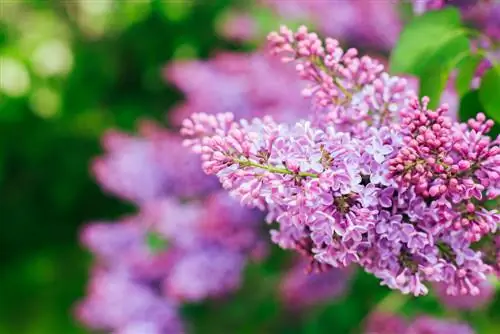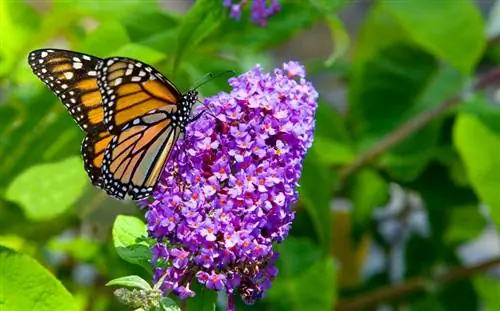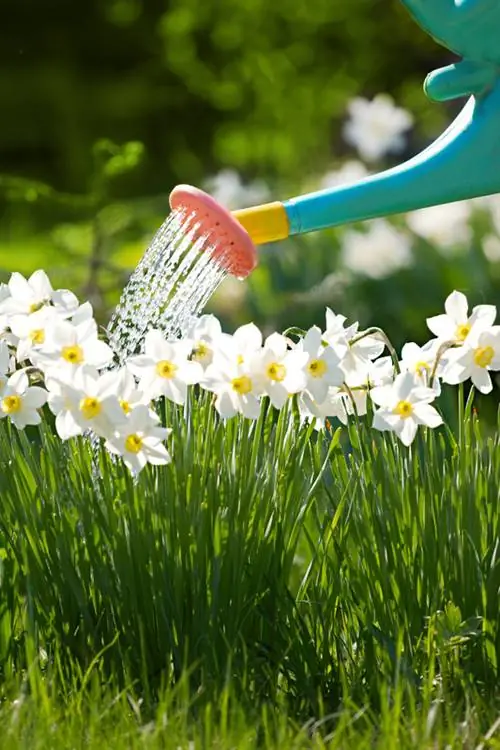- Author admin [email protected].
- Public 2023-12-16 16:46.
- Last modified 2025-01-23 11:21.
Lilac is a real feast for the eyes, especially during its flowering period, when the flower spikes, which are up to 30 centimeters long, open their countless small flowers. In order to enjoy this shrub or tree for a long time, careful care is necessary, and lilacs practically grow by themselves in the right location.

How do you properly care for lilacs?
Proper lilac care includes occasional watering (especially for young plants), fertilizing with compost and horn shavings, pruning after flowering, prevention of fungal diseases and pest infestation. Planted lilacs are hardy, potted plants need winter protection.
Should you water lilacs? If yes, when and how often?
You actually only need to water a planted, older lilac that is established in its location occasionally during longer dry periods. Otherwise, watering is only necessary for young, freshly planted specimens and lilacs cultivated in pots.
When and how should you best fertilize lilacs?
Fertilize your planted lilacs once or twice a year with ripe compost and horn shavings, which you carefully work into the root disc when sprouting and in early summer. In some locations, fertilization with lime can also make sense. Potted lilacs are supplied with a liquid container plant fertilizer between April and September, which should only contain a little nitrogen.
Can you cut lilacs? When is the best time to prune?
The best time to prune is directly after flowering, when you have to clean out the withered shoots anyway. It's best to take this opportunity to cut straight away
- shoots growing criss-cross and otherwise in a twisted manner
- over-aged, poorly leafed, diseased and dead branches
- thin, weak-appearing shoots
- and remove excessively long branches.
If you prune back in spring, you should definitely not remove the new shoots, because lilacs always bloom on this year's branches.
Which diseases affect lilacs more often?
Lilac is particularly sensitive to fungal diseases, which is why you should close all possible entry points or keep them as small as possible. This also includes pruning on a warm and sunny day so that they can dry quickly - and using sharp and disinfected tools. Mildew is particularly common, as is the so-called “lilac disease”. In the case of the dreaded vertlillium wilt, only pruning and a change of location helps.
Which pests can live on lilacs?
The lilac leaf miner or lilac moth is relatively common and you will first notice its presence by irregular, brown and dried leaf spots.
Is lilac hardy? What is the best way to overwinter it?
Planted lilacs are sufficiently hardy and therefore do not require any special winter protection. Only specimens cultivated in pots should be given one so that their roots do not freeze. For this purpose, you can wrap the planter with a fleece. If the above-ground parts of the plant freeze back, the lilac usually sprouts again from the roots.
Tip
Lilac unfortunately reacts very sensitively to its root disc being planted, which is why it is better to leave it free. Mulching with bark mulch should also be viewed critically, as this removes nutrients (especially nitrogen) from the soil.






